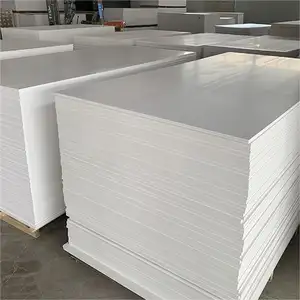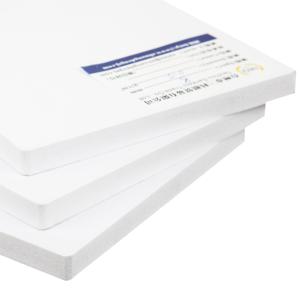
All categories
Featured selections
Trade Assurance
Buyer Central
Help Center
Get the app
Become a supplier

(1400 products available)



























The EPE foam sheet cutting is available in different styles depending on functionality. Here are some variations that business buyers can order.
Manual cutters
A manual cutter operator cuts EPE foam sheets by hand. The device has a simple design and includes a cutting blade, handle, and frame with measuring guides. In general, a manual cutter is for small jobs that require portable devices. Even with its low cost, it has many limitations, such as safety concerns and lack of efficiency.
Tabletop cutters
This type of cutter is small and easy to use on a table or another work surface. It comes with a tabletop, a cutting head, and a support stand. Also, the cutter provides an accurate cutting process with a controlled foam sheet feeding process. In general, tabletop cutters are suitable for cutting foam sheets into smaller pieces. This gives the advantage of using it in areas with limited space.
Vertical cutters
Vertical cutters have a tall profile and take up less space. Normally, the cutter comes with a vertical cutting blade and supports that hold the foam sheet in place. Additionally, vertical cutters give accurate cutting for straight lines. They are ideal for cutting large pieces of foam sheets into smaller sections.
Automatic cutters
An automatic cutter makes cuts with a powered mechanism. Automatic cutters have a cutting blade, guides, and an adjustable platform. It allows users to make precise and fast cuts. In general, an automatic cutter is perfect for high-volume cutting of EPE foam sheets. Also, it reduces labor intensity and improves speed in the cutting process.
Specifications when it comes to EPE foam sheets vary depending on what the buyer intends to use the sheets for. Below are some of the more common EPE foam sheets with respect to application and their specifications:
Packaging:
Typical packaging-oriented EPE foam sheets range in thickness from about 5mm to 10mm. They also come in various sizes, with 25cm by 50cm being a common one. The sheets are usually of low-density polyethylene, which provides cushioning, shock absorption, and protection.
Infants and Toddlers
The thickness of EPE foam sheets for toddlers and infants is typically around 1cm to 2cm. Many manufacturers focus more on safety and get non-toxic polyethylene foam sheets. The typical size of the sheets is 1 meter by 2 meters. Special attention is paid to avoid slippery surfaces so that the kids can play safely.
Sound Insulation:
The optimal soundproofing EPE foam sheet thickness is 2-5 mm. Smaller cells lead to better sound absorption. The size of these sheets depends on the intended use—for example, 1.2 m by 2.4 m if the sheets are meant for a wall. On density, higher-density polyethylene sheets provide superior sound absorption. They also have better durability. These sheets are mostly used in construction.
Thermal Insulation:
The thickness for thermal insulation is mostly 1cm to 5cm. Many manufacturers designed double layers for improved insulation. Sizes can range from 1 meter by 1 meter to 1 meter by 1.8 meters or even more. Low-density sheets are preferable in residential buildings. High-density EPE sheets are common in refrigeration or industrial spaces.
Advertising and Branding:
These sheets normally come in an eye-catching color, such as pink or purple. The thickness usually ranges from 5 mm to 15 mm, and the sheets can be used for both branding and protecting fragile products. The typical dimensions are 2 ft by 3 ft, but buyers can always order customized options.
When it comes to maintenance, manufacturers first need to ascertain whether the EPE foam is open cell or closed cell, as this will affect the cleaning process. In most cases, especially when the foam is used for packaging, dusting with a soft brush is enough. If soapy water is needed, the solution should be mild to avoid damaging the sheet. With a lint-free towel, one can sponge the soapy water onto the affected area and use another dry towel to absorb as much water as possible. Allow the sheet to dry completely before using it. Regular packaging EPE foam sheets don't need much maintenance, but cleaning should be done occasionally to avoid residue buildup.
Due to their excellent damping property and flexibility, EPE foam sheets can be utilized in a variety of fields.
Hardware packaging:
The cushioning sheets can be used to wrap up glass items like electric switches to prevent them from shattering and breakages, as well as for packing delicate items. They have the ability to stop electrical switches from breaking. They can also be used to pack delicate items, onion crates, and automobiles and appliances for effective cushioning. Additionally, they're used in logistics to safeguard products in transit.
Furniture packaging:
EPE sheet cutting is a great option in this scenario because it can wrap things up really tightly and is very elastic. For instance, it can be used to wrap up furniture like doors, mirrors, and more to keep them from getting scratched or dented during transport. It can also be employed as a protective wrapper for bed mattresses, cushions, and carpets, which need extra care due to their bulk and fragility.
Toys and sports packaging:
Toys that require cushioning, protection, or insulation can benefit from customized EPE foam sheet cutting. For example, puzzle mats for children's play areas are typically put on floors to provide a safe and comfortable space for toddlers. Additionally, sports equipment like bicycles, tennis rackets, and other similar items may require packaging inserts or protective wraps to ensure they remain intact and functioning well when stored or transported.
Automotive packaging:
When it comes to automotive applications, EPE foam sheets are often shaped and designed to serve as soundproofing components inside vehicles. This means they can help reduce noise levels within the car by damping sounds coming from things like the tires or the road beneath. Furthermore, EPE sheets might be used as lightweight insulating barriers between different parts of the vehicle to help conserve energy by minimizing heat loss.
Construction packaging:
In the realm of construction, EPE foam sheets can provide thermal insulation for building structures, helping to retain heat and lower energy costs. They may also serve as a moisture barrier, preventing water from seeping through and causing damage. Moreover, EPE may act as soundproofing materials, minimizing noise transmission between rooms and making the living space more comfortable and enjoyable for residents. Additionally, EPE sheets could be utilized to protect surfaces like floors, walls, and windows from getting scratched or damaged during the construction process.
Advertising industry:
In the advertising field, EPE foam sheets can be used to create eye-catching displays and attractive product presentations that effectively grab people's attention and stimulate their purchasing desires. Furthermore, EPE sheets may also be applied to make indoor and outdoor advertising billboards, providing businesses with more visibility and exposure to potential customers. Additionally, EPE foam could be utilized to fabricate promotional materials and giveaways for events or trade shows, helping companies to enhance brand awareness and establish a closer relationship with consumers.
Both industrial and commercial buyers should consider the following factors when choosing an EPE foam sheet cutter.
Capacity and Size
Firstly, buyers should consider the cutting capacity and size of the foam sheet cutter. They need to ensure that the cutter can accommodate the volume of foam sheets they typically work with. Also, they should consider the dimensions of the cutter to ensure that it fits within their workspace.
Cutting Accuracy and Precision
A foam cutter with high precision and accuracy is necessary to achieve clean and precise cuts. Consider the cutter's cutting tolerance and ensure that it can provide the desired cutting quality. In some specific applications, the cutting quality will directly affect the final product. Therefore, industrial and commercial buyers need to ensure that the cutting accuracy and precision can meet their needs.
Types of Cuts
Various types of foam cutters are suitable for different cutting requirements. For example, some cutters can only perform straight cuts, while others can make intricate or curved cuts. Buyers should choose a cutter that can meet their specific cutting needs.
Durability and Build Quality
industrial and commercial buyers should choose an EPE foam cutter with good durability and build quality. It can withstand long-term high-frequency use, to have an extended lifespan. In addition, they should consider the maintenance requirements of the cutter and ensure that it is easy to maintain.
Energy Efficiency
Energy-efficient operation is also an important consideration. An energy-efficient cutter can help reduce operating costs and environmental impact.
Safety Features
The safety functions of cutters are also important considerations. Safety features like emergency stop buttons ensure user safety during operation.
Q1: What is the method of cutting EPE foam?
A1: EPE foam can be cut using different methods depending on the thickness and shape of the desired product. It can be manually cut using a knife or a hot wire or be professionally cut using a CNC machine, cutting machine, or laser.
Q2: Is expanded polyethylene the same as EPE?
A2: They are the same. EPE is often used for cushioning and insulation in packaging materials, as well as for protective inserts in boxes for fragile items.
Q3: What tools do I need for EPE foam sheet cutting?
A3: For small-scale projects, a sharp utility knife, scissors, or a hot wire can be used. However, for more precise and professional cutting, a CNC foam cutter is recommended.
Q4: Can we provide a customized EPE foam cutting template?
A4: Yes, we can provide a customized EPE foam cutting template according to customer's requirements.